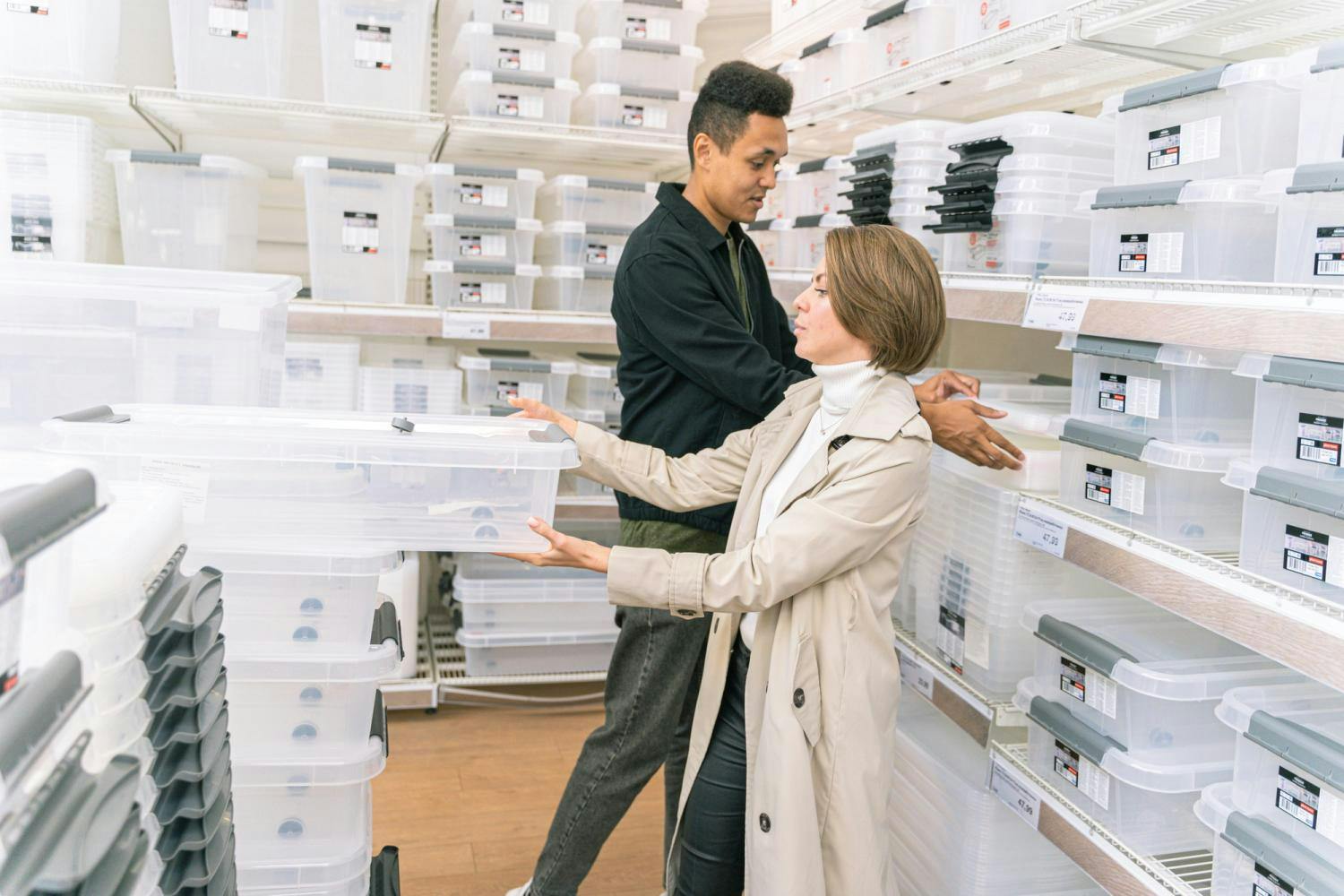
Injection Moulding for Polystyrene and Polypropylene Boxes:
The manufacturing process of our polystyrene and polypropylene boxes involves precision injection moulding. This technique employs advanced machinery and moulds to shape these versatile plastics into the desired box forms. High-quality polystyrene and polypropylene granules are melted and injected into intricately designed moulds, where they cool and solidify, forming the sturdy and reliable containers that meet the diverse needs of various industries. This process ensures uniformity in the final product, resulting in consistently well-crafted plastic boxes that exhibit exceptional strength and durability.
Crafting Perspex and Polycarbonate Boxes:
When it comes to creating Perspex and polycarbonate boxes, our meticulous approach guarantees a level of craftsmanship that meets the most demanding standards. The production of these boxes entails a multi-step process that encompasses several precise techniques:
- Laser Cutting: Utilizing state-of-the-art laser technology, the sheets of Perspex and polycarbonate are cut with remarkable precision. This step defines the initial shape and dimensions of the box components, ensuring accuracy down to the finest detail.
- CNC Machining: Computer Numerical Control (CNC) machining takes the process a step further, enabling intricate designs and precise detailing. This technology ensures that every edge, corner, and contour is perfectly formed, contributing to both the functionality and aesthetic appeal of the final product.
- Hand Polishing: The human touch plays a crucial role in achieving the impeccable finish of our Perspex and polycarbonate boxes. Skilled artisans meticulously hand-polish each box, refining the surfaces to a crystal-clear, flawlessly smooth texture. This not only enhances the visual appeal but also provides a tactile experience that signifies the exceptional quality of these boxes.
The combination of laser cutting, CNC machining, and hand polishing in the crafting process results in Perspex and polycarbonate boxes that boast a flawless appearance. These boxes not only provide secure storage and protection but also serve as elegant showcases for their contents.
How are Plastic Boxes Measured?
They are measured by Length x Width x Depth, as illustrated below:
Note: All dimensions on our website are approximate internal measurements.
Is Recycling Possible for Plastic Boxes?
Due to the minimal alteration in the properties of polystyrene even after multiple processing cycles, it can be effectively recycled. However, polystyrene's biodegradation is sluggish. In sorting facilities, hard polystyrene can be effortlessly separated using near-infrared technology. Pure polystyrene is mechanically shredded and transformed into high-quality recyclate, which can then be reprocessed into new products using injection moulding techniques. When used plastic is accurately separated, it can be converted into new plastic through proper separation, sorting, and regrinding processes.
Sustainability Considerations
Various global standards dictate the collection of used plastics, potentially leading to variations in colour within processed recycled materials based on the sorting process used or the extent of sorting. Country-specific factors also play a significant role here. For instance, darker material is generated when plastic waste, such as yellow sacks, is collected for further processing into recycled material.
Post-industrial recyclate is sourced from remnants in the plastics industry, including punching waste or faulty batches. These materials are easily recyclable due to their uniformity and minimal contamination. In cases where post-consumer recycling isn't viable or exceptional material purity is demanded, post-industrial recycling offers a practical alternative to virgin materials. The initial raw material for post-consumer recycling consists of packaging waste that consumers have recycled.
Our industry is in a constant quest for alternative plastic packaging solutions that are either biodegradable or sourced from sustainable origins.
Who Utilises Plastic Boxes for Packaging?
Our boxes find application in a wide array of sectors:
- Science and Technology
- Aerospace Industry
- Ministry of Defence
- Healthcare Testing Kits
- Surgical Instruments
- Laboratory Research Programmes
- Electronics
- Dental
- Industrial Ceramics
They are also widely embraced by various universities and archaeological institutes. Plastic boxes are chosen for:
- Presentation Packs
- Marketing Promotions
- Giftware
- Hobbies
- Travel Kits
- Sewing Kits
- Survival Kits
- Accessory Kits
Furthermore, they prove indispensable for:
- Storing and studying insects, butterflies, ants
- Geological purposes such as collating fossils or minerals
- Organising and storing Small Components or Spare Parts
- Arts and Crafts
They are also perfect for displaying and storing collections of:
- Awards
- Trophies
- Dolls
- Model Trains
- Cars
In the realm of stationery needs, we cater to A4 and A5 sizes. For situations where transparency is crucial, we offer options with crystal-clear clarity. Typically supplied with clear lids and bases, select items are available with clear lids and coloured bases.